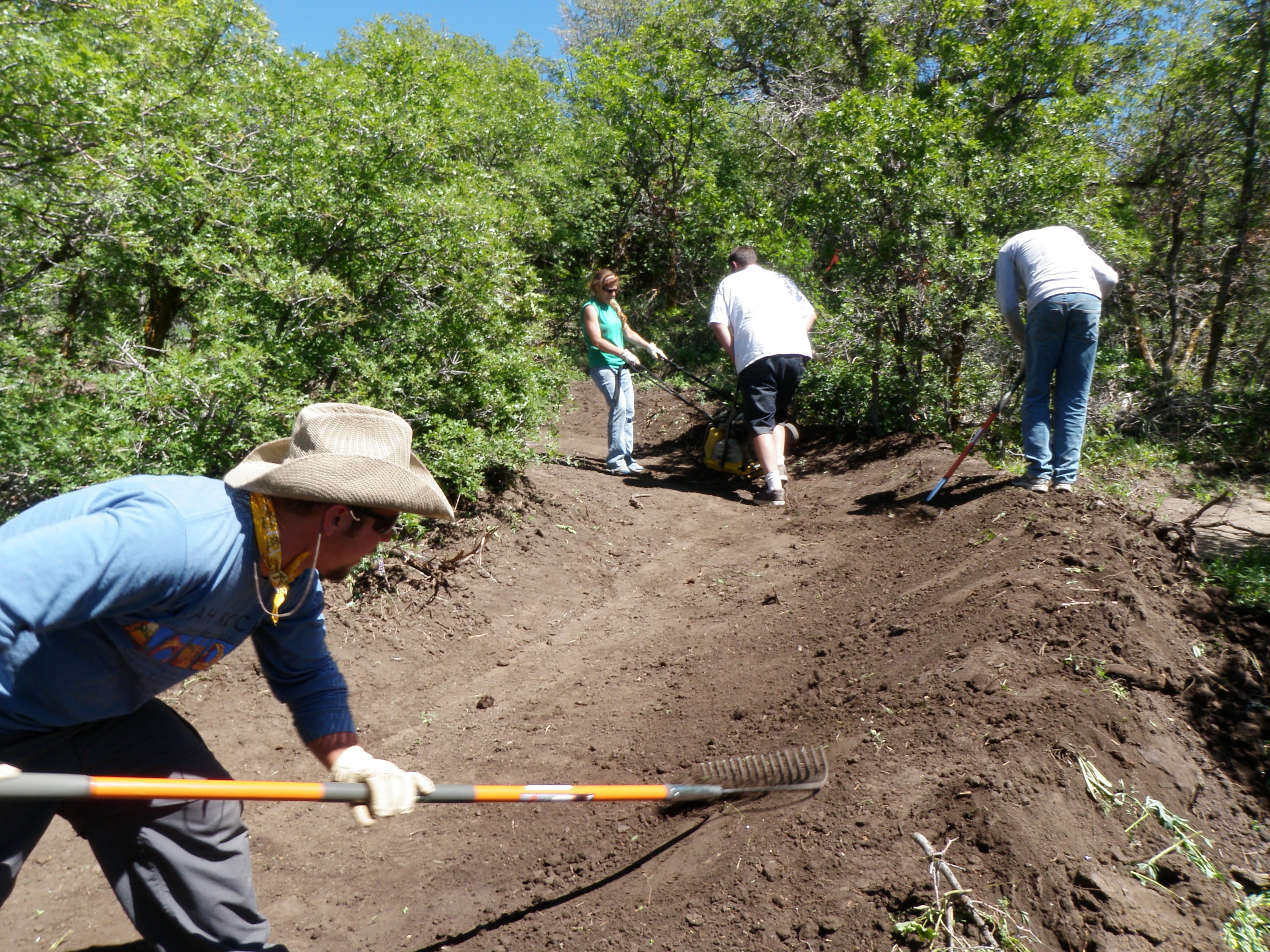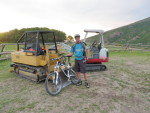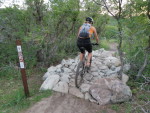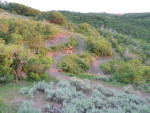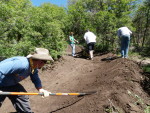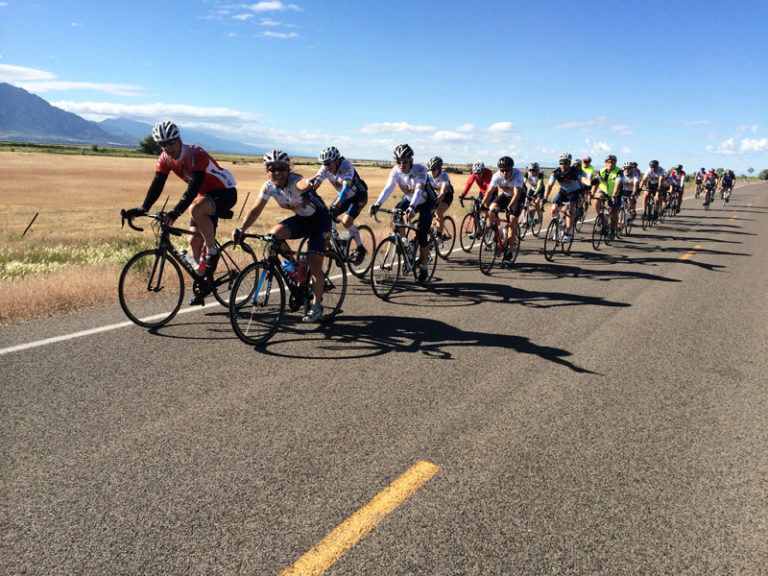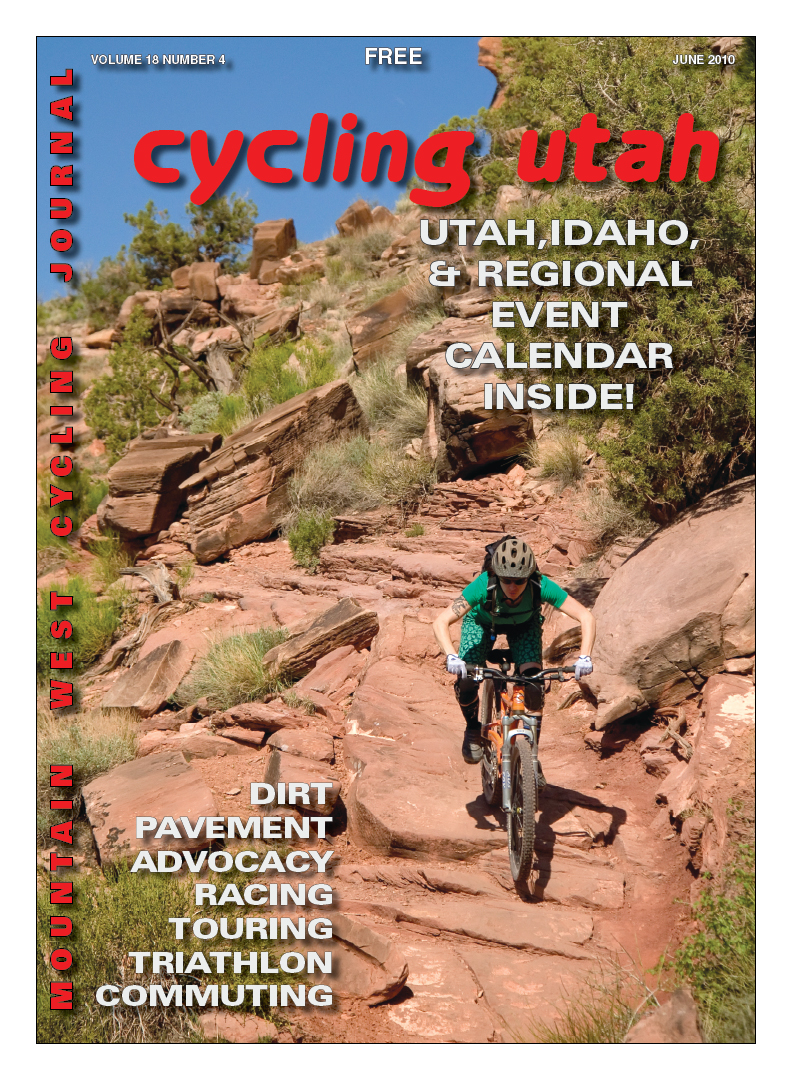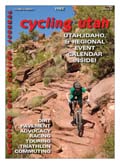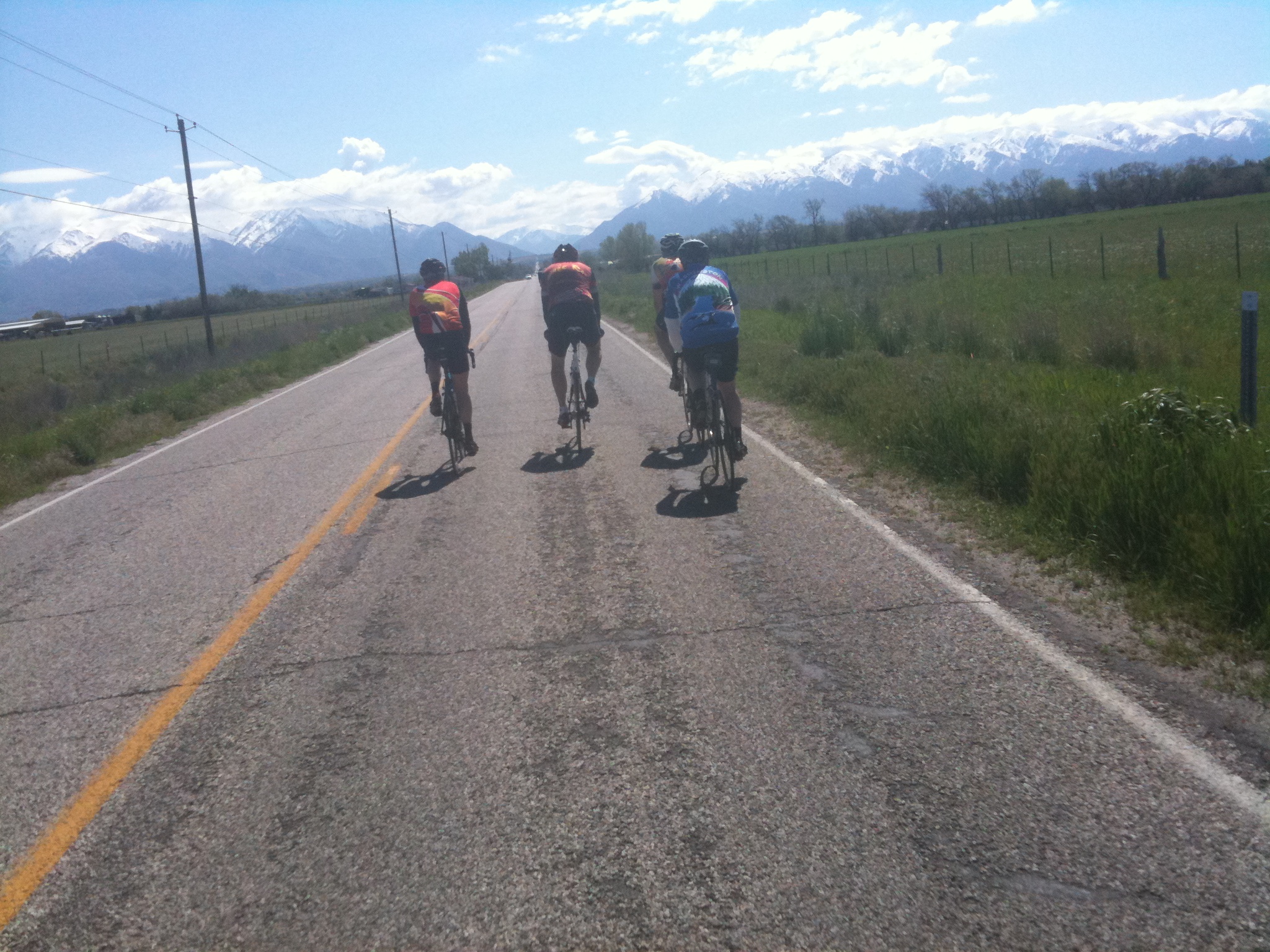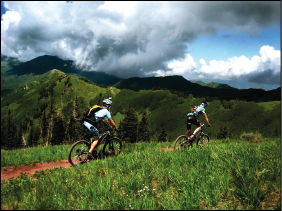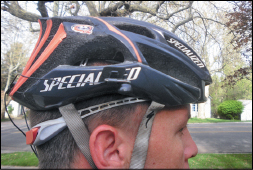Time Trial marks day three of the USA Cycling Juniors, U23, Elite Road National Championships
Bend, Ore. (June 24, 2010) – Evelyn Stevens (New York, N.Y. HTC/Columbia), Mike Olheiser (Huntsville, Ala./TriStar Cycling) and Andrew Talansky (Napa, Calif./Cal Giant Berry Farms) joined 13 others Thursday in slipping on the Stars-and-Stripes jersey after clocking the winning times in the elite and U23 time trials in Bend. In all sixteen national titles were awarded as riders in each category, including Paralympic athletes, raced the clock on the gradually climbing out-and-back course.
With their wins Stevens and Talansky, along with junior men’s and women’s 17-18 national titlists Lawson Craddock (Houston, Texas/Hot Tubes) and Coryn Rivera (Tustin, Calif./Peanut Butter & Co TWENTY 12) also secured automatic nominations to the team that will represent the United States at the UCI Road Cycling World Championships later this summer.
After finishing just one second off the title a year ago, Stevens got her redemption today by tearing up the 35-kilometer course. The former wall street banker turned cyclist’s time of 47:38.7 was more than half a minute better than that of former Olympian and time trial world champion Amber Neben(Irvine, Calif./Webcor) who grabbed the silver in the division that included many of the best female riders in the world. Former women’s Giro stage winner Mara Abbott (Boulder, Colo./Peanut Butter & Co TWENTY 12) grabbed the bronze with a 49:05.5, just ahead of Alison Starnes (Mill Valley, Calif./Team TIBCO).
“The downhill section was really hard for me; I had to work hard and I was still losing time,” explained Neben who is still recovering from a series of injuries. “It’s great for USA Cycling to have people like this that continue to come up and ride so strong-even internationally.”
Olheiser re-claimed his elite men’s time trial national title confirming his place as one of the best amateur men in the country. Clocking a time of 44:45.4 over the 35-kilometer course, Olheiser rode into his Stars-and-Stripes jersey thirty seconds ahead of silver medalist Daniel Harm(Southworth, Wash./Lake Washington Velo) and nearly a minute faster than bronze medalist Robert Sweeting (Bradenton, Fla./Globalbike Racing).
With many of last year’s winners graduating into the pro ranks, the highly contested U23 men’s division was up for grabs. Recent Volta Tarragon stage winner and USA Cycling National Development Program rider Talansky took the opportunity to shine, posting a time ten seconds better than silver medalist Carter Jones (Boulder, Colo./Jelly Belly) while David Williams (Grand Rapids, Mich./Bissell) grabbed third in 45:19.3.
Reigning world championship time trial silver medalist Lawson Craddock (Houston, Texas/Hot Tubes) showed he is prepared to go for the rainbow this year, slaughtering the 24-kilometer course in 32:49.2. His time was more than two minutes better than his closest competitor silver medalistEamon Franck (Pacific Grove, Calif/Team Specialized Racing).
“I’m just glad I was able to live up to my expectations,” said Craddock. “I’m really looking forward to worlds.”
After being upset by Jessica Prinner (South Elgin, Ill. (ABD Cycle Club) in this event a year ago, the most decorated junior cyclist in American history Coryn Rivera (Tustin, Calif./Peanut Butter & Co TWENTY 12) took back her title and earned her 26th Stars-and-Stripes in today’s time trial. Rivera finished nearly 20 seconds better than Prinner leaving Kendall Ryan (Ventura, Calif./VRC-NOW-MS Society) to grab the bronze.
In the junior men’s 15-16 event Colin Joyce (Pocatello, Idaho/Idaho Cycling) earned the title in 34:47.7, just ahead of Logan Owen‘s (Bremerton, Wash./Lake Washington Velo) 35:00.9. In the last of the age divisions to contest the 24-kilometer course, Jacqueline Denny (Liberty, Mo./Team Kenda) recorded a 42:23.3 to earn her first national title while Addyson Albershardt (Matthews, N.C.) was second with a 42:32.7 and Zoe Frazier(Suwanee, Ga./Frazier Cycling) claimed the bronze.
“This shows all of the work I’ve done has paid off and makes me want to work even harder for the future,” said Denny of her new Stars-and-Stripes.
After a heartbreaking crash that left him to tow his bike across the line in yesterday’s criterium contest Daniel Parks (Dallas, Texas/GS Tenzing) came out on top in the time trial; winning the national title 15 seconds faster than yesterday’s criterium champion Philip O’Donnell (Suwanee, Ga./Frazier Cycling). William Barta (Boise, Idaho/Boise Young Rider Dev. Squad) came in third with a time of 17:40.1, just 10 seconds behind that of O’Donnell.
Kirsten Williams (Lonetree, Colo./Natural Grocers), Laurel Rathbun (Monument, Colo.), Emma White (Delanson, N.Y./Capital Bicycle Racing) andZoe Reeves (Grand Rapids, Mich./Priority Health) were finally able to topple Katrina Howard (Fresno, Calif./Vapor Racing) who won both the road race and the time trial earlier this week in the 13-14 women’s division.
Gage Hecht (Parker, Colo./International Christian Cycling) recorded a time of 19:32.4 on the 12-kilometer junior 10-12 men’s course to earn the Stars-and-Stripes, while Jenna Gardner (West Jordan, Utah/PCIM) earned the win in the women’s division.
Time trial day was also highlighted by paralympic competition which saw four national champions crowned. Muffy Davis (Salt Lake City, Utah) andSteven Peace (San Diego, Calif.) earned handcycling national titles as Greta Neimanas (Colorado Springs, Colo.) and the blind tandem of Clark Rachfal (Annapolis, Md.) and David Swanson (Tucson, Ariz.) won the women’s and men’s bicycle divisions respectively.
For complete results from the para-cycling portion of the national championships, click here and for more detailed coverage of the para-cycling portion of the event, visit www.usparalympics.org.
Racing will continue at the USA Cycling Juniors, U23, Elite and Paralympic Road Cycling National Championships tomorrow as the Elite, U23 and older junior categories contest the criterium in downtown Bend, Ore.
All junior riders are invited to attend a Q&A session with USA Cycling’s Junior Programs Manager Benjamin Sharp at the Phoenix Inn in Bend on Friday, June 25 at 6:00 p.m. Mr. Sharp will discuss USA Cycling’s development pathway and field questions about track programs. The Q&A session will be held in the boardroom at the Phoenix Inn and registration is not required.
For more information including schedules, rules, course maps and more, visit the Juniors, U23, Elite Road National Championships official event page.
To view a collage of photos from the event check out USA Cycling’s photo gallery and to view and purchase a variety of high-quality images from the week’s racing, visit CascadeEventPhotography.com. Also check out USA Cycling’s YouTube page to view a random selection of videos from the event.
*Rights free photo attached courtesy USA Cycilng/Heidi Swift
Photo caption: The elite women’s time trial winners celebrate atop the podium in Bend’s Old Mill District on Thursday evening.
2010 USA Cycling Juniors, U23, Elite Road National Championships
June 22-27
Bend, Ore.
Elite Women
1. Evelyn Stevens (New York, N.Y. HTC/Columbia) 47:38.7
2. Amber Neben (Irvine, Calif./Webcor) 48:17.3
3. Mara Abbott (Boulder, Colo./Peanut Butter & Co TWENTY 12) 49:05.5
4. Alison Starnes (Mill Valley, Calif./Team TIBCO) 49:08.8
5. Alison Powers (Pinecliffe, Colo./Team Vera Bradley Foundation) 49:53.2
U23 Men
1. Andrew Talansky (Napa, Calif./Cal Giant Berry Farms) 44:34.3
2. Carter Jones (Boulder, Colo./Jelly Belly) 44:47.9
3. David Williams (Grand Rapids, Mich./Bissell) 45:19.3
4. Nathan Brown (Covington, Tenn./Trek-Livestrong) 45:21.7
5. Alister Ratcliff (Durango, Colo./ BikeReg.com/Cannondale) 45:48.3
Elite Men
1. Michael Olheiser (Huntsville, Ala./TriStar Cycling) 44:45.4
2. Daniel Harm (Southworth, Wash./ Lake Washington Velo/Broadmark Capitol Cycling) 45:15.6
3. Robert Sweeting (Bradenton, Fla./Globalbike Racing) 45:38.6
4. Philip Mooney (Davis, Calif./Yahoo Cycling Team) 45:39.0
5. Richard Feldman (Ketchum, Id./Durance Cycleworks) 45:39.2
Junior Men 17-18
1. Lawson Craddock (Houston, Texas/Hot Tubes) 32:49.2
2. Eamon Franck (Pacific Grove, Calif/Team Specialized Racing) 34:50.9
3. Thomas Jondall (Tucson, Ariz./White Mountain Road 34:57.6
4. Zack Noonan (Kutztown, Pa./Young Medalists) 35:03.6
5. Ben Gabardi (Madison, Miss./Herring Gas) 35:09.1
Junior Women 17-18
1. Coryn Rivera (Tustin, Calif./Peanut Butter & Co TWENTY 12) 39:24.4
2. Jessica Prinner (South Elgin, Ill. (ABD Cycle Club) 39:42.9
3. Kendall Ryan (Ventura, Calif./VRC-NOW-MS Society) 40:07.9
4. Ruth Winder (Lafayette, Calif./Peanut Butter & Co TWENTY 12) 41:16.1
5. Kaitlin Antonneau (Racine, Wis./Team Kenda) 41:24.8
Junior Men 15-16
1. Colin Joyce (Pocatello, Idaho/Idaho Cycling) 34:47.7
2. Logan Owen (Bremerton, Wash./Lake Washington Velo) 35:00.9
3. Gregory Daniel (Englewood, Colo.) 35:27.1
4. Jordan Cullen (Hudson, Wis./Minneapolis Bicycle Club) 35:28.9
5. Alexey Vermeulen (Pinckney, Mich./Priority Health) 35:46.4
Junior Women 15-16
1. Jacqueline Denny (Liberty, Mo./Team Kenda) 42:23.3
2. Addyson Albershardt Matthews, NC 42:32.7
3. Zoe Frazier (Suwanee, Ga./Frazier Cycling) 42:36.5
4. Alexis Ryan (Ventura, Calif./The TEAM SoCalCross) 42:50.8
5. Bailey Semian (Mertztown, Pa./Chester County Cycling) 43:29.2
Junior Men 13-14
1. Daniel Parks (Dallas, Texas/GS Tenzing) 17:15.2
2. Philip O’Donnell (Suwanee, Ga./Frazier Cycling) 17:30.9
3. William Barta (Boise, Idaho/Boise Young Rider Dev. Squad) 17:40.1
4. Broderick Hartley (Lilburn, Ga.) 18:29.5
5. Tulio Weber (Tucson, Ariz/El Grupo Youth Cycling) 18:32.3
Junior Women 13-14
1. Kirsten Williams (Lonetree, Colo./Natural Grocers) 19:40.8
2. Laurel Rathbun (Monument, Colo.) 20:05.8
3. Emma White (Delanson, N.Y./Capital Bicycle Racing) 20:13.2
4. Zoe Reeves (Grand Rapids, Mich./Priority Health) 20:32.4
5. Katrina Howard (Fresno, Calif./Vapor Racing) 20:50.7
Junior 10-12 Men
1. Gage Hecht (Parker, Colo./International Christian Cycling) 19:32.4
2. Grant McElroy (Portland, Ore./Beaverton Bicycle Club) 19:38.3
3. Michael Hocking (Boise, Id./Boise Young Rider Dev. Squad) 20:09.4
4. Matteo Jorgenson (Boise, Id./Boise Young Rider Dev. Squad) 20:11.6
5. Phillip Truppelli (Ringoes, N.J./Colavita Racing) 20:29.1
Junior Women 10-12
1. Jenna Gardner (West Jordan, Utah/PCIM) 21:39.0
2. Julyn Aguila (El Paso, Texas) 22:37.2
3. Mina Anderberg (Louisville, Colo./Flatiron Flyers) 22:58.0
4. Skylar Schneider (West Allis, Wis.) 23:36.6
5. Rebecca Israel (Moreno Valley, Calif./CPT-Connie Cycling) 24:10.9
Women’s Handcycling
1. Muffy Davis (Salt Lake City, Utah)
Men’s Handcycling/Trikes
1. Steven Peace (San Diego, Calif.)
2. Matthew Updike (Denver, Colo.)
3. David Randall (Mansfield, Ohio)
Women’s Bicycles/Tandems
1. Greta Neimanas (Colorado Springs, Colo.)
2. Kelly Crowley (Redwood, Calif.)
3. Megan Fisher (Missoula, Mt.)
Men’s Bicycles/Tandems
1. Clark Rachfal (Annapolis, Md.) and David Swanson (Tucson, Ariz.)
2. Michael Farrell (Colorado Springs, Colo.)
3. Sam Kavanagh (Bozeman, Mt.)

